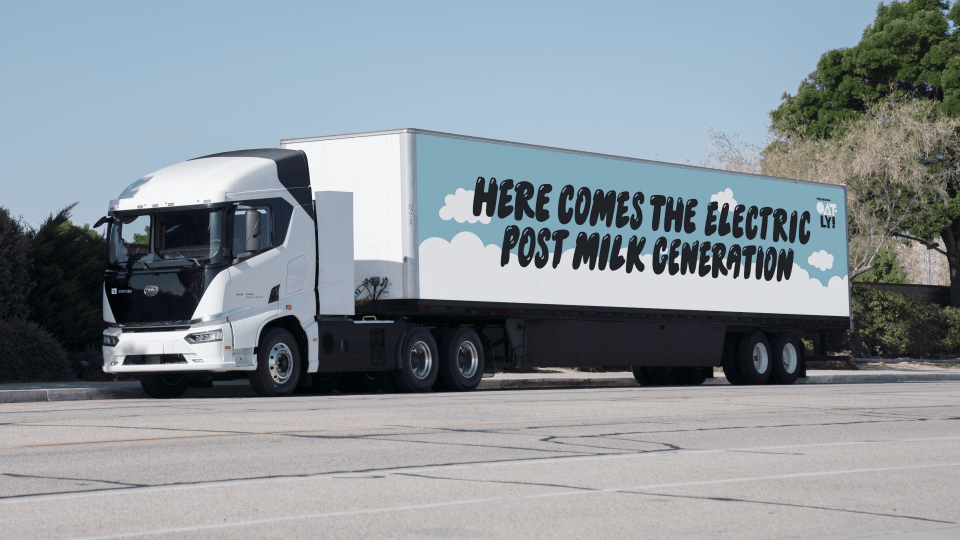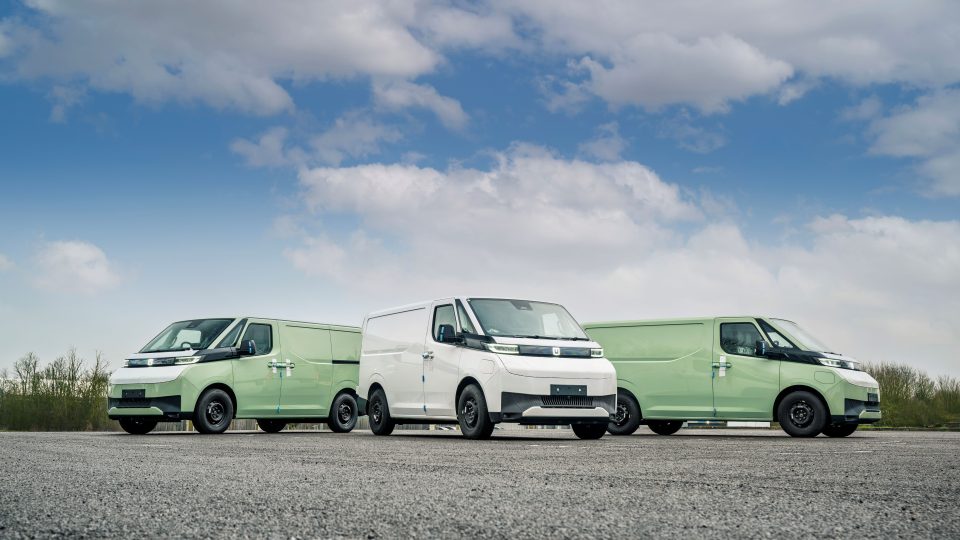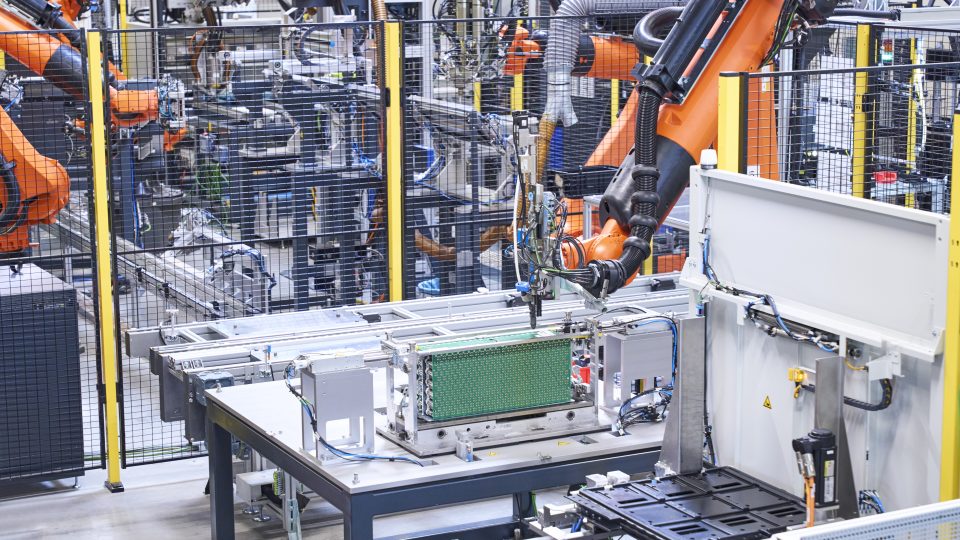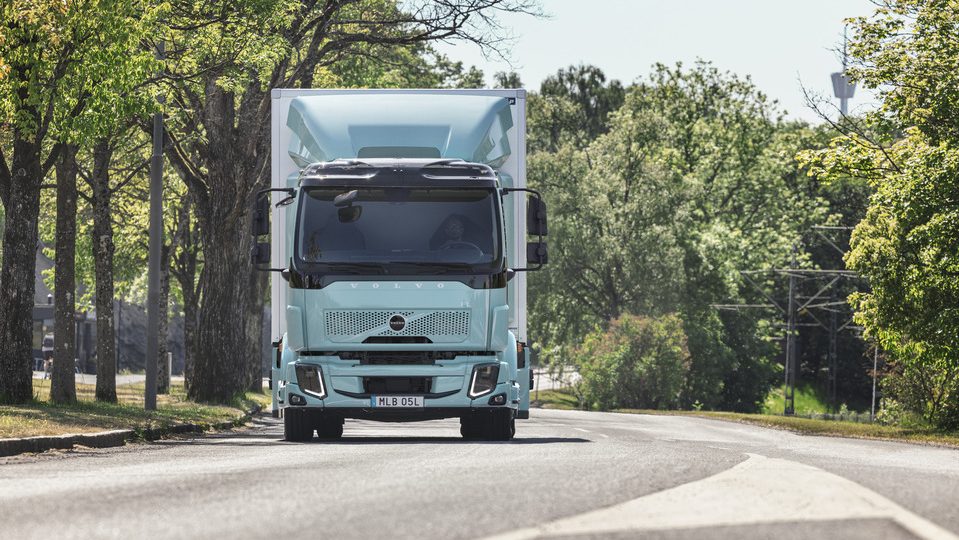Interact Analysis on e-truck powertrain components in Asia-Pacific by 2030: from 3.7 to 68 billion dollars
“For me, one of the big stories in the electrified truck and bus powertrain components market for APAC is that the powertrain pricing of a battery electric vehicle is set to decline from $16,800 to $11,900 by 2030", said Shirly Zhu, Principal Analyst at Interact Analysis. "In contrast, fuel cell powertrains will cost $86,000 by 2030, and this high price will still represent a decrease of 47% since 2021".
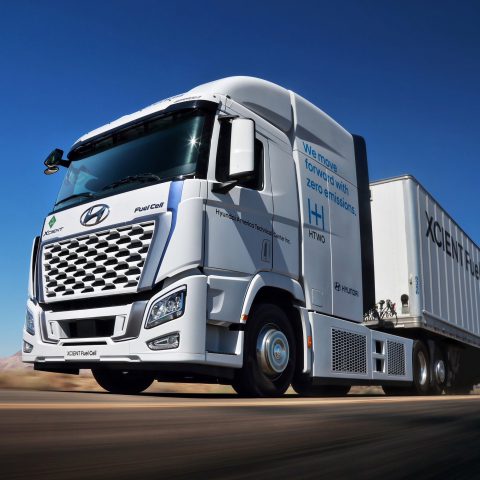
The market of e-truck (and e-bus) powertrain components in the Asia-Pacific (APAC) area will grow from 3.7 billion dollars in 2021 to 68 billion dollars in 2030. Such a trend, highlighting a CAGR of 38%, is mainly due to the growth of the electric truck sector. According to a research carried out by Interact Analysis, “battery electric is by far the leading powertrain type in APAC, accounting for 97% of all new energy on-road bus and truck units in 2021, a position that will be maintained out to 2030. Additionally, although fuel cells currently have a much weaker market position (with 2,000 units sold in 2021), they are set to enjoy phenomenal growth out to 2030 reaching 322,000-unit shipments”.
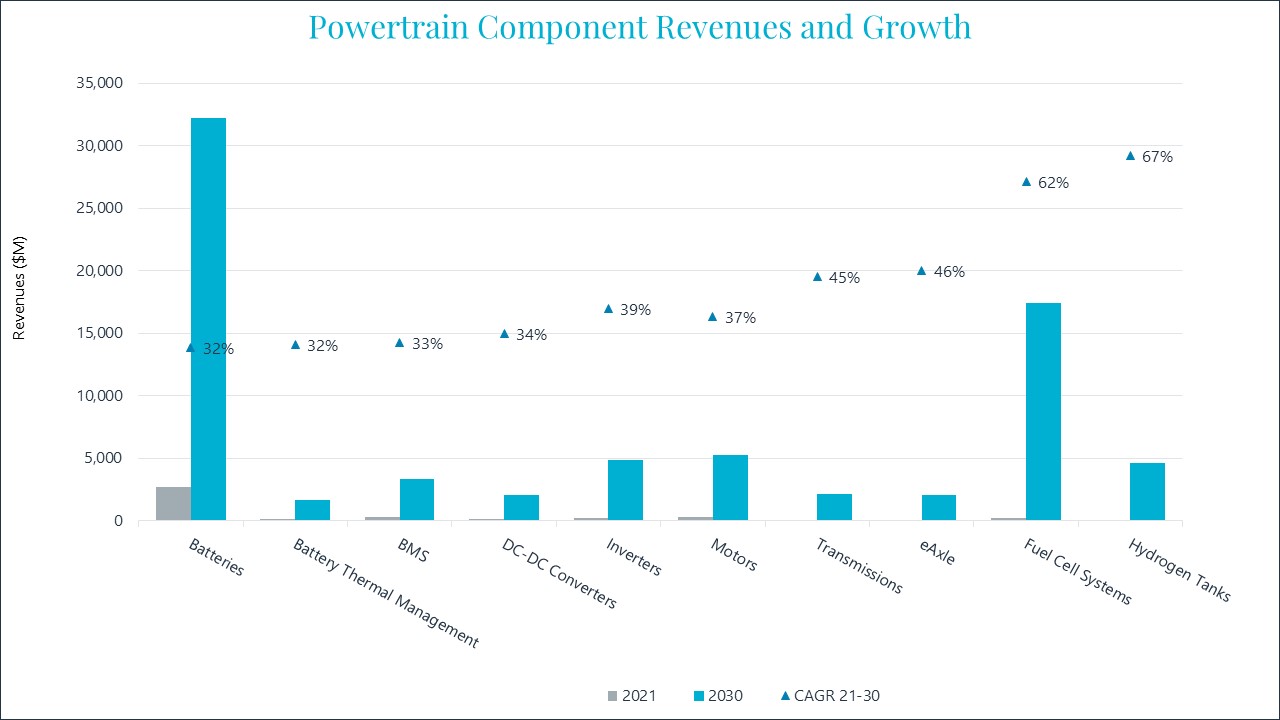
China is already leading by far the Asian market. The country is set to maintain its leading position by 2030 for powertrain revenue generation, expected to reach $42.3 billion in 2030. Rest of Asian countries, including Japan, India, South Korea and other countries, are expected to grow by 51% annually up to the end of the decade.
The growth of e-truck powertrain components within a decade
As for technology, battery electric was the dominant powertrain type, generating an estimated $3.4 billion sales revenues in 2021, constituting 91% of the powertrain total. Despite limited sales revenues in 2021, fuel cell powertrains are predicted to generate the fastest growing powertrain revenues, with a CAGR of 64% over the forecast period, reaching $27.6 billion revenues, or 40% of the market total in 2030, with a value of $27.6 billion. This will be as a result of increasing fuel cell vehicle adoption (particularly for heavy-duty trucks and large-size buses). Also, component revenues per vehicle are much higher than for the powertrains of battery electric and hybrid.
Potrebbe interessarti
Interact Analysis: the electric truck market will be booming by 2030, also compared to electric buses
“For me, one of the big stories in the electrified truck and bus powertrain components market for APAC is that the powertrain pricing of a battery electric vehicle is set to decline from $16,800 to $11,900 by 2030“, said Shirly Zhu, Principal Analyst at Interact Analysis. “In contrast, fuel cell powertrains will cost $86,000 by 2030, and this high price will still represent a decrease of 47% since 2021. The significant price erosion for powertrain components is mainly attributed to increasing demand for new energy buses and trucks, component product development, as well as intensive market competition. Further, the downward powertrain pricing will favor to narrow the price gap of electrified and ICE vehicles, and thusly drive the electrification of buses and trucks”.




